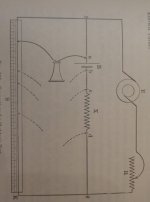There are multiple potential fire hazards with this, depending on factors you don't specify (resistance, etc):
If you connect a non-current-limited source (battery) to another battery that is at a lower voltage, the current is only limited by the total circuit resistance and the difference in voltage.
Let's make it simple and say you have two identical packs as you describe, and assume each has identical 500milliohm total resistance (they wont be identical, and it's different at different states of charge) for a total of 1ohm total resistance. One is full 87v, one is empty at 67v, so a 20v difference.
20v / 1 ohm is 20A. Voltage will sag some on one and rise on the other, dropping the current a bit, let's say it drops to 18A for simplicity. 18A charge current across 3 cells is 6A each, so nearly twice the specification's charge current, meaning twice what the cells were intended to take. That will cause heating within the cells, by how much I don't know, but it could be at least twice as much as there should be.
If it's only 11Ah and that is the difference in state of charge between the packs, the high current won't last all that long, because you'll only get about 5Ah (assuming significant loss of power as heat) out of the full pack into the empty one, but the heat generated in the cells could still do damage--if it is enough to cause a fire eventually, I don't know. It depends on the actual resistance, actual heat, and what kind of cell damage is caused by the nearly double charge currents, condition the cells started in, and how long the excessive current lasts.
If the cell and interconnect / etc resistance is a lot lower than the 500milliohm SSWAG I used, the current will be higher. Let's say it's half that...taht means the current will be double, 40A, whcih means four times what the cells were meant to take. Etc.
If you have a BMS on the packs, then the charge port of the BMS on the low pack must be designed for and capable of the highest charge current you'll use. If it is not, the FETs can fail in several ways, from catastrophic exploding to just unsoldering themselves from the heat (leaving solder blobs and/or parts floating in the BMS and/or battery pack to short things out) or most commonly in a way that then does not show externally, but leaves them stuck on. If that latter mode happens, the BMS cannot ever stop charge even if there is something wrong with a cell that will cause a fire (overcharging, overheating (assuming temperature sensors in the pack and BMS that can read them) etc). That means there is not just a fire risk from the FETs themselves if they should overheat enough to fail catastrophically, there is a risk that a silent failure could lead to cell damage and overcharge over time that could lead to a fire.
If the charge port wiring, connectors, crimps, solder, interconnects, etc., are not all rated for and capable of handling the max current, then they too are at risk of damage that could lead to a fire.
There was something else but I forgot what it was while typing the above.


